The Edmonton Oilers understand the importance of a dependable goalie tandem.
In the second round of the Stanley Cup playoffs last season, the Oilers were trailing the Vancouver Canucks 2-1 heading into Game 4. They needed a spark. More importantly, starter Stuart Skinner needed a mental reset. So backup goalie Calvin Pickard entered the series for two games, going 1-1 and playing well. The Oilers rallied with two straight wins after Skinner returned in Game 6, and their starter was mentally locked in from that point all the way through Game 7 of the Cup Final.
Whether it’s the regular season or the postseason, today’s NHL is such that teams have multiple goaltending options. Sometimes that means having a competent backup to give an overworked star goalie a breather. Sometimes that means having a goalie rotation that goes three netminders deep.
So which teams have the best goaltending depth?
These rankings were formulated through discussions with a variety of goalie experts — coaches, analytics gurus, former players — as well as through stats from sites like Evolving Hockey, Money Puck, Hockey Reference and Stathletes.
Rosters are through Oct. 16. And keep in mind that these rankings are a combination of past performance and projections for the 2024-25 season.
Let the debates begin!

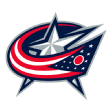
Elvis Merzlikins, Daniil Tarasov
This duo had a bounce-back season after both finished in the bottom 10 in goals saved above replacement in 2022-23. Dean Evason’s man-on-man defensive system was beneficial to the Minnesota Wild‘s defensive metrics during his time as head coach, but he was dealing with a different experience level with much of his personnel there vs. being in Columbus, which had the seventh-youngest roster in the NHL on opening night.
Merzlikins, 30, has three more years left on his contract at $5.4 million annually. Tarasov, long considered the goalie of the future in Columbus, is entering his third full season and showed flashes of that potential in the second half of 2023-24.
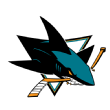
Mackenzie Blackwood, Vitek Vanecek
The Sharks were originally higher in this ranking before they demoted Yaroslav Askarov to the AHL ahead of the season, where the former top Nashville prospect is already showboating after shutouts.
Yaroslav Askarov is up to his old shutout tricks
pic.twitter.com/gI2BhEw6Te
— American Hockey League (@TheAHL) October 13, 2024
It won’t be too long before Askarov takes his act to the NHL, but as it stands, the Sharks have a solid but unspectacular veteran goalie tandem that previously shared the crease with the 2022-23 Devils.
Blackwood, 27, has the greater potential to break out … but alas, he’s also the more breakable of the two.
“Blackwood has the talent to be Team Canada’s starter. But not the health,” one goaltending analyst said.

John Gibson, Lukas Dostal, James Reimer
The Ducks lost Gibson for at least the first month of the season after an appendectomy. Every season that passes brings Gibson closer to the end of his contract (summer 2027) and inches the salary cap higher to make his cap hit ($6.4 million annually) more palatable for potential trading partners. Speculation about a Gibson trade feels like it has been going on since the Ducks were “Mighty” without a deal manifesting, partially because their 31-year-old starter has been in statistical decline for several seasons.
Dostal, 24, outplayed Gibson last season in a career-high 44 games and looks to build on that promise.
Reimer was a waiver claim when Gibson was lost at the end of training camp. He’s a steady veteran hand in his 15th NHL season.

With Jacob Markstrom now wearing Devils’ red, the Flames turned their crease over to Vladar, a career backup, and Wolf, a promising 23-year-old who had 18 games of NHL experience entering this season.
“I’m still not sure he’s an NHL guy now,” one goalie analyst said of Wolf. “I think they’re going to give him all the opportunity, but I’m not sure that he is a full-time NHL guy.”
Inexperience and a down year for Vladar last season earned the Flames a low place in this ranking, but one goaltending analyst believes they have a high ceiling.
“They have a tandem that could make this ranking look very silly,” the analyst said. “But it’s also hard to argue that they belong anywhere else.”

Petr Mrazek, Arvid Soderblom, Laurent Brossoit
In his 13th NHL season, hockey fans know what they’re getting from Mrazek at this point: average goaltending punctuated by a few weeks when he looks like Dominik Hasek. He played to three goals above expected last season for the rebuilding Blackhawks.
Söderblom … did not, as he had a minus-17.7 goals saved above expected in 2023-24. Former Winnipeg Jets goalie Brossoit signed a two-year free agent deal but, unfortunately true to form, begins the season on the shelf after meniscus surgery.
Waiting in the wings: former Boston University star Drew Commesso, 22, in his second season with the AHL Rockford IceHogs.

The Flyers believed they had finally found an answer to the goaltending questions that had vexed them for decades in Carter Hart, 25, last season. But he took leave from the team after 26 games, as one of four NHL players charged with sexual assault by London, Ontario, police following an investigation into Canada’s 2018 world junior championship team. Hart is an unrestricted free agent.
Ersson took the crease and played 51 games for the Flyers last season, finishing with an .890 save percentage and a 23-19-7 record for coach John Tortorella.
Fedotov is a 6-foot-7 netminder, and finally arrived in the NHL at the end of last season after a circuitous journey that included a season of mandatory military service in Russia. It took him nine years between when he was drafted to when he debuted in the NHL. He turns 28 years old in November.
“It’s a disadvantage,” Marty Biron, a former NHL goaltender and studio analyst for the Buffalo Sabres, told ESPN. “You should be in your prime years and you still have to learn. If the Flyers are looking at it and saying they’re going to spend a few years getting him to the level he needs to be at, well, all of a sudden he’s 30 years old.”
There was hope that Fedotov’s arrival could give the Flyers another clear starter, but some are skeptical.
“Fedotov has agility challenges, and I don’t love the way he reads plays,” one goaltending analyst said.
“The Flyers are a giant question mark for me,” another said.
There is another hope: Alexei Kolosov, a 22-year-old from Belarus, who finally reported to the Flyers after being discontent with his place on the depth chart. The talented netminder is currently at AHL Lehigh Valley, along with veteran Cal Petersen.

The goalie competition in Red Wings training camp was slightly more intense than “Squid Game,” with several netminders vying for two jobs. In the end, it was Talbot and Lyon who secured the spots, with Ville Husso, in the last year of a three-year contract, sent through waivers to the AHL. Lyon played 44 games with a .904 save percentage last season for the Wings.
Talbot was given a two-year free agent contract after what appeared to be a strong comeback season with the Los Angeles Kings — or so his .913 save percentage would indicate. A glance under the hood showed he had a minus-5.7 goals saved above expected for the Kings.
“Talbot’s going to be interesting there,” one goalie analyst said. “L.A. just makes a lot of guys look better than they actually are.”

Philipp Grubauer, Joey Daccord
Ranking the Kraken was a difficult task thanks to the sample size. Before last season, Daccord had played 19 games in his NHL career before appearing in 50 contests for Seattle last season, posting a stellar .916 save percentage and a 2.46 goals-against average while finishing on the plus side of goals saved above expected. Was that an aberration or did the 28-year-old unlock something?
Grubauer is more than halfway through that six-year contract he signed with the Kraken before their inaugural season. He hasn’t finished with a save percentage above .900 in any of those three seasons, nor has he posted a positive goals saved above expected.
“Grubauer is a league-average goaltender at best,” one goaltending analyst said.

Alexandar Georgiev, Kaapo Kahkonen, Justus Annunen
A recently retired NHL goaltender who submitted his ranking to ESPN had the Avalanche trio ranked last overall. Many of the others we surveyed had the Avs somewhere in the 15 to 20 area.
“Georgiev looks like a shell of himself, Annunen is an .800 goalie and I’m not sure what, if any, depth they have beyond him,” the former netminder said.
One’s mileage with the Mile High goaltending depends entirely on how one feels about Georgiev as the primary starter, and how far away one feels Annunen is from potentially usurping him. On the former point, Georgiev was a minus-7.4 goals saved above expected last season, which was a huge plummet from his 2022-23 metrics (12.8 goals saved above expected). His 0.83 wins above replacement ranked 23rd overall for goalie with at least 20 games played.
He was better in the postseason for the Avalanche, specifically when he outdueled Connor Hellebuyck in Colorado’s series win over Winnipeg.
Annunen is young (24) and inexperienced, with 18 NHL games entering this season. “They were clearly picking their spots with him last season, putting him in situations that were relatively easy,” one goalie analyst said.
The question of whether the team has faith in Annunen playing a significantly higher chunk of the schedule or supplanting Georgiev if his struggles deepen was answered with the team’s waiver claim on former Jets goalie Kähkönen. He arrives as a veteran insurance policy and to help steady what’s been a chaotic crease for the Avs to start the 2024-25 season.

Sam Montembeault, Cayden Primeau
GM Kent Hughes smartly locked Montembeault into a new three-year contract at a $3.15 million annual cap hit in the middle of last season. That price might have climbed for the 27-year-old goaltender, who posted a .903 save percentage and a .700 quality starts rate for the Canadiens last season.
“Montembeault had a strong start and then tailed off, which is understandable behind a team that played like Montreal did last season,” one goaltending analyst said.
While Montembeault is one of the most underrated goalies in the NHL, our goalie experts believe that Primeau is also flying well under the radar.
“I like Montembeault, but Primeau really surprised me last year with how well he played,” one goaltending analyst said of Primeau, who had a .910 save percentage in 23 games last season.
“Cayden took a massive step last season,” another goalie expert said.

Ukko-Pekka Luukkonen, Devon Levi
The man they call “UPL” had his breakout season in 2023-24: a 27-22-4 record in 54 games, with a .910 save percentage and 10.2 goals saved above expected. That included five shutouts.
His performance was clutch for Buffalo after rookie Levi struggled early before finding his game: His final line included a .899 save percentage and 5.8 goals saved above expected.
“They like Levi a lot. It’s tough sometimes for those guys that come right out of college. They gave him the crease last season and then he was down in [AHL] Rochester, where he did great, actually,” said one goalie analyst, who also would like to see Levi eat into some of those UPL starts. “I think Levi is ready for the NHL but he has to play.”

Stuart Skinner, Calvin Pickard
It’s hard to ignore that vision of Skinner from last postseason: giving up two goals or fewer in 11 of his last 15 games through the Oilers’ Game 7 loss in the Stanley Cup Final. He stepped up huge in critical spots for the Oilers, like when he stopped 33 of 34 shots to eliminate Dallas and 32 of 33 shots to spark the Edmonton rally in the Final.
But if you set aside those moments of playoff stardom and his undeniable charm — we’re talking about an NHL goalie who plays as Toad in postgame “Mario Kart” tournaments — we’re left with a player who posts pretty average numbers.
Skinner had a .905 save percentage in the regular season and a .901 in the postseason. According to Stathletes, he had a minus-8.5 goals saved above expected in the postseason and just 2.31 in the regular season. Some of the analysts we spoke with believe Skinner should have posted better numbers after Edmonton figured itself out defensively when Kris Knoblauch was hired.
“Skinner really found his game after the coaching change last season and the Oilers stopped giving up so much off the rush defensively,” one analyst said.
Pickard was fine last season, with a .909 save percentage in 23 games after it was apparent Jack Campbell wasn’t working out in Edmonton.
But this is Skinner’s show. He’s just good enough where the Oilers don’t need to sweat about their goaltending if they play well in front of him. But can he repeat that glorious run again in next spring’s playoffs?

Charlie Lindgren, Logan Thompson
The rise of Lindgren was an unexpected joy for the Capitals last season, as he played a career-high 50 games and posted a .911 save percentage behind coach Spencer Carbery’s solid defensive system. That took him from a solid backup to Washington’s starter, making Darcy Kuemper expendable.
“You can trust Charlie now. He’s done it for two years,” one goalie analyst said of Lindgren, who is in the last year of a three-year deal for the Caps.
With Kuemper having been traded to the Kings for Pierre-Luc Dubois, the Capitals turned to former Golden Knights goaltender Thompson, whom they acquired in a memorable draft weekend trade — memorable because Thompson was doing an autograph session in Vegas as a member of the Knights moments after the news broke. (To his credit, he still made the appearance.)
Thompson is seeking a bounce-back season after his save percentage slipped from his breakout 2022-23 campaign to last season. He still went 25-14-5 for Vegas last season.
“Thompson is so cocky. He had a vibe to him, which I kind of thought was great,” one goaltending analyst said. “One person in Vegas told me he wasn’t very coachable, but I don’t know if that’s an issue.”

Kuemper is GM Rob Blake’s latest attempt to stabilize his goaltending in the post-Jonathan Quick era.
“If you get the Darcy of every other year in his career other than last year, they’ll be fine,” one goalie analyst said.
Kuemper’s only season with the Capitals was a disaster, as he posted the lowest save percentage of his career (.890) and a terrible minus-15.6 goals saved above expected. He lost his gig to Charlie Lindgren, and the Kings acquired him in a “problem for problem” swap for center Pierre Luc-Dubois.
“In theory, the Kings’ defensive environment is always going to make their goaltending look good,” one goaltending analyst said.
Rittich was the Kings’ best goaltender last season, with 8.8 goals saved above expected and a sterling .921 save percentage in 24 games. He’s earned the backup role in the NHL, with Pheonix Copley relegated to the AHL to start the season.
Perhaps Kuemper is the answer. Or perhaps it’s like how one goalie analyst put it: “The Pacific Division looks like where good goaltending goes to die.”

Tristan Jarry, Alex Nedeljkovic, Joel Blomqvist
Few Pittsburgh athletes have been more divisive over the past decade than Jarry. He has shown he can play upward of 56 games as a starter and be in the Vezina Trophy conversation. He’s a goaltender who shows flashes of greatness, like he did in his six shutouts last season.
But his save percentage has declined for three straight seasons, he lost the crease to Nedeljkovic last season and might lose it to Blomqvist in 2024-25 with the way the 22-year-old has looked.
“Blomqvist is a legit prospect. A lot of teams are already kicking themselves for letting him fall to 52nd in the 2020 draft,” one goaltending analyst said.
Still, there are those who believe in Jarry’s abilities, even as the Penguins have been checking trade options for the 29-year-old.
“I think Jarry is due for a major bounce-back season,” one goaltending analyst said.

The NHL’s newest team inherited some advantages from the former Arizona Coyotes: young scoring forwards, a slew of prospects and a fairly clean payroll contractually. But Utah also inherited Ingram, which means they inherited one of the most dependable goaltenders in the league.
Ingram, 27, put together two straight solid seasons, with .907 save percentages in both. He posted six shutouts in 2023-24 and 3.4 goals saved above expected, playing 23 more games year over year.
“They’re a team that defends well and puts their goalies in a good situation,” one goalie analyst said.
Vejmelka was one of those goalies who got a bunch of credit for keeping the Coyotes competitive in games, even if his own numbers weren’t that stellar. But as Ingram thrived last season, Vejmelka struggled to a minus-3.6 goals saved above expected.
“Goaltending is cyclical. Vejmelka was fantastic two season ago and then the opposite last season,” a Western Conference executive said. “We’ll see if he cycles back.”

After Hill backstopped the Golden Knights to their first Stanley Cup, Vegas rewarded him with a contract extension. The hockey world waited to see if he was a postseason fable or a veteran goalie who finally unlocked his game.
“He played the same way at the start of last season that he did during their Cup run, before the injuries hit,” one goalie analyst said. “Adin Hill has tons of upside.”
Injuries limited him to 35 games last season, which still ended up being a career high. He posted a .909 save percentage and it looked like the Golden Knights made the right call — if Hill can remain healthy.
Samsonov is an upgrade over Logan Thompson, who had been a tandem starter for three seasons. He’s looking to rebound from a stumble in Toronto last season (.890 save percentage), and coach Bruce Cassidy’s 5-on-5 system could offer him that opportunity.
Akira Schmid, acquired from the Devils, is tending goal in the AHL.

Frederik Andersen, Pyotr Kochetkov
Kochetkov nearly doubled his appearances year over year, posting a .911 save percentage in 42 games last season. The anticipation is that the 25-year-old is poised to take over the crease for the Hurricanes this season, as veteran teammate Andersen looks at free agency next summer and hasn’t been a model of availability.
“Andersen is a question mark with injuries,” one goalie analyst said.
Is Kochetkov ready to make a leap to elite status? Coach Rod Brind’amour’s system should offer him a comfortable environment. But some still have questions about his overall play.
“The tools are all there for Kochetkov, but his underlying numbers make him a question mark,” another goaltending analyst said. “There’s potential, but also some uncertainty there.”

14. Minnesota Wild
Marc-Andre Fleury, Filip Gustavsson, Jesper Wallstedt
The farewell tour for Fleury finds him as part of a trio in the Wild net, aka NHL King Ghidorah for you kaiju fans.
Fleury, who turns 40 in November, is in his 21st NHL season. His numbers declined significantly in 2023-24, which saw him play in 40 games, his lowest total in a full season since 2016-17 with the Penguins. Fleury went from a .908 save percentage down to .895 and had a whopping minus-11 goals saved above expected.
Gustavsson got the majority of the games (45) but was also underwater analytically (minus-7 goals saved above expected). But hey, now that he’s a goal scorer perhaps it all evens out.
“Minnesota is such a tough one to figure out,” a goaltending analyst said. “[Fleury’s] been better than his numbers would indicate, but Gustavsson went from being solid two years ago to being underwater last season based on the analytics.”
Wallstedt, 21, is the goalie of the future and projects to get a share of starts for the Wild as well this season. He had a .910 save percentage in 45 games in the AHL last season.

Last season’s goalie tandem ranking had the duo of Joonas Korpisalo and Forsberg ranked 15th overall, as it appeared the Senators had sufficiently addressed their netminding issues. And then they finished last in the NHL in team save percentage (.884).
Now, it appears they really, really sufficiently addressed their netminding issues by trading for Ullmark, who was half of the best tandem in the NHL with the Boston Bruins. Ullmark’s numbers normalized after his preposterously good Vezina Trophy-winning 2022-23 season (40-6-1, .938 save percentage, 1.89 goals-against average). But his typical seasons have him around a .915 save percentage, which Ottawa would take every day of the week and twice on Sunday.
The reason this tandem isn’t higher is Forsberg. He tore the MCL in both knees in 2023 and never really found his form after that. A groin injury took him out of action last season as well.
“Ullmark makes a huge difference. But Forsberg is a year removed from double knee injuries,” a goalie analyst said. “I’ve always liked him, but he showed some signs of slowing down.”
Forsberg was considered one of the best bargain goalies in the NHL from 2021-22 to 2022-23, including a 46-game campaign that saw him finish with a .917 save percentage. But he posted an .890 save percentage in 30 games last season.
“If he can bounce back, I like Forsberg as a backup more than a 1A,” another goalie analyst said.

The Leafs revamped their goaltending again during the offseason, letting Ilya Samsonov and Martin Jones walk, handing the keys to the promising Woll and signing Stolarz off the Stanley Cup champion Florida Panthers.
Woll looked great in limited action last season, with a .907 save percentage in 25 games and 7.9 goals saved above expected. His postseason numbers in three games were extraordinary: .964 save percentage and an 0.86 goals-against average before an injury cut his playoff run short in the Leafs’ series loss to the Bruins.
“I think Woll is extremely talented, can be an NHL goaltender and a good one,” one goaltending analyst said. “But they’re going to need Stolarz to give him a lot of help in Year 1. I could see a 42 to 40 split in games if they’re both healthy.”
Therein lies the rub: If they’re both healthy. Woll and Stolarz have been known to miss time with injuries during their pro careers.
“The problem with Woll? It’s that old sports cliché: ‘One of the greatest abilities is availability,'” one goaltending analyst said.
But if they’re healthy? The Leafs could have a special tandem.
“If Woll and Stolarz could both get through a season healthy, you could put them in the top six,” the goaltending analyst said. “But since Woll is already hurt, it’s probably too late for that.”

There was a decent spread of opinions on where the Predators should rank. Some had them higher. One former NHL goalie had them slightly lower than this, at No. 15. But given how solid Saros is as a starter, a placement just outside the top 10 seems about right.
“Saros had a down year last season and I still think he might be better than the next two starters on this list,” one goalie analyst said.
Saros led the NHL in games played for the third straight season, but saw his numbers dip to a .906 save percentage after three straight campaigns of .918 or better. That was despite improvement in the Predators’ even strength defensive metrics under new coach Andrew Brunette.
With a new eight-year contract starting next season, now would be the time for Saros to show last season was an anomaly while continuing to be one of the NHL’s hardest working goaltenders.
“Wedgewood and Saros are good,” another goalie analyst said.
Others see it differently.
“I see Wedgewood as a downgrade here,” another said, in reference to former Predator Kevin Lankinen, now with Vancouver.

Jeremy Swayman, Joonas Korpisalo
The Bruins had the best goaltending tandem in hockey. Alas, they also had two goalies who both wanted to play around 55 games. So unless owner Jeremy Jacobs was going to convince the NHL board of governors to expand the season to 110 games, Boston had to ship one of them out. That goalie ended up being Ullmark to Ottawa, which meant the Boston crease now belongs to Swayman.
With this preseason contract drama settled, Swayman is now a solo artist. His first four seasons in the NHL have been outstanding, including a .916 save percentage in 44 games last season. While coach Jim Montgomery’s defensive system yields solid results for the Bruins, the underlying numbers tell us that their goaltending has helped that system succeed more than the system has helped them. Swayman had 9.45 goals saved above expected last season.
That might not bode well for Korpisalo, who came over in the Ullmark trade. While there’s no question Boston provides a more proactive defensive environment for him than Ottawa, he’s going to have to regain his form to make this a successful tandem after a dud season with the Senators (.890 save percentage).
“Does Korpisalo look like the goalie he was two years ago or does he look like the goalie he was last season?” a goalie analyst pondered.
Brandon Bussi, 26, lurks in the AHL if the Bruins need him this season.

Thatcher Demko, Kevin Lankinen, Arturs Silovs
Two things can be true about Demko. The first thing is that when he’s healthy, few goaltenders in the NHL can match the 28-year-old’s abilities. He was second for the Vezina last season with a .918 save percentage in 51 games. The second thing is that “when healthy” is doing a lot of work here.
“I had been flip-flopping Vancouver and Winnipeg as the top goalie tandem for Canadian teams, but Demko’s injury had me put the Canucks a little lower,” a goaltending analyst said.
Kevin Woodley of InGoal Magazine and NHL.com told Sportsnet 650 last month that Demko is having an issue with the popliteus muscle, which is in the back of the knee and what he called a “small but significant stabilizing muscle” for an athlete.
When Demko comes back, whether he’s impacted by this injury when he does come back … it’s all a mystery early in the season for Vancouver.
“There remains a lot of uncertainty about the injury,” Woodley said.
Because of Demko’s injury, Silovs played more postseason games (10) than he had played regular season games (9). The 23-year-old Latvian had his moments, but the Canucks signed free agent Lankinen to stabilize the crease until Demko returns.
One goalie analyst felt that Lankinen has been underestimated. “Both of his years in Nashville, he had really good underlying numbers,” the analyst said. “On a per shot basis, he might have outperformed Saros last season.”
For what it’s worth, one ex-NHL goaltender we surveyed had the Canucks ranked 17th overall as a tandem.
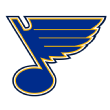
There might not be another goaltender in the NHL who elicits more reactions than Binnington.
After leading the Blues to a Stanley Cup championship in 2019 as a confident rookie, Binnington struggled to establishment himself as elite goalie based on traditional stats and perception — many fans saw him as a goaltender just as likely to take a hot-headed penalty as he was to post a shutout. But those who watched the Blues with regularity swore he passed the eye test. And some in the goalie analytics community said a few metrics, relative to team performance, backed that up.
But even the haters had to tap their sticks for Binnington last season. He had a .913 save percentage and a quality starts ratio of .600, his highest since his rookie season. While his expected save percentage (.899) was right at the league average, his 14.9 goals saved above expected ranked him fourth overall.
“You can completely justify having St. Louis this high based on how Binnington and Hofer play relative to the team around them last season,” a goalie analyst said.
Hofer’s numbers were analogous to those put up by Binnington, and he topped the starter in some categories when averaged out on a per game basis. He appeared in 30 games last season.
“Hofer has a smaller sample size in the NHL, but his numbers compared well to Binnington’s last season,” another goalie analyst said.

Andrei Vasilevskiy, Jonas Johansson
For all the focus on signing Jake Guentzel instead of Steven Stamkos, and Mikhail Sergachev getting shipped to Utah, the Lightning’s fate this season ultimately comes down to whether Andrei Vasilevskiy is Andrei Vasilevskiy again.
Vasilevskiy’s save percentage declined for three straight seasons following the Bolts’ last Stanley Cup win. He played a lot of hockey from 2019 to 2023. He also missed the start of last season after microdiscectomy surgery to address a lumbar disk herniation, and he wasn’t the same for months after his return. Once considered the best goalie in the world, Vasilevskiy’s .900 save percentage was below league average and he had a minus-11 goals saved above expected.
The assumption here is that Vasilevskiy returns to form and plays upward of 60 games for the Lightning, mitigating the impact of Johansson (.890 save percentage), a below-average backup whose best attribute is his cap hit ($775,000).
“We can judge tandems, but it’s about the No. 1 guy, most importantly,” a goalie analyst said of the Lightning.
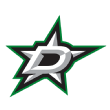
After finishing fifth for the Vezina in the 2022-23 regular season, Oettinger has had his ups and downs. He hit the wall in the 2023 playoffs, eventually finishing with a sub-.900 save percentage. Last season, he was limited to 54 games due to injury and finished with a .905 save percentage.
“Oettinger didn’t have the strongest regular season last year for Dallas. Kind of flat,” one goalie analyst said.
That said, he had a banger of a postseason with a .913 save percentage, despite facing Connor McDavid and Leon Draisaitl for six games in the conference finals.
Expectations couldn’t be higher for Dallas this season, a team that’s lost in consecutive conference finals. Oettinger is a big reason. Coming off a normal offseason and with better injury luck, he could win the Vezina for the first time.
He has a new backup in DeSmith, replacing Scott Wedgewood. As DeSmith showed in Pittsburgh, he understands the assignment, although his 2023-24 with the Canucks could have been better.
“DeSmith [exemplified] the law of diminishing returns in Vancouver. Started great, finished average,” one goalie analyst said.
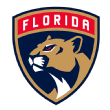
Sergei Bobrovsky, Spencer Knight
Is there a more “the numbers don’t matter” goalie in the NHL than Bobrovsky?
It doesn’t matter if he’s got a .901 save percentage and loses the crease toward the end of the regular season, or if he has a .915 save percentage and finishes third for the Vezina. Those situations played out over the past two seasons, and both times he backstopped the Panthers to the Stanley Cup Final, hoisting the trophy for the first time last season.
(Of course, the biggest example of “the numbers don’t matter” might be his cap hit, which went from overpayment to justifiable cost over the span of two playoff runs.)
“Bob’s difficult to define here,” a goalie analyst said. “Look what he did in the regular season. Then look what he did in the postseason. There’s no denying the latter.”
Bobrovsky has a new primary backup this season in Knight, who moves up to replace new Leafs goalie Anthony Stolarz. His challenges off the ice have been well-documented. This is Knight’s time to shine on the ice after years of preparation.
“We haven’t seen Spencer in a while, but he has the potential to be better than a lot of the backups here,” another goalie analyst said.
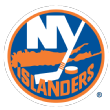
Like other elite goaltenders in the top-10 tandems, Sorokin is also looking to bounce back from a down season. The 29-year-old posted a .908 save percentage last season, the first time in his career he’s been lower than .918.
He was still well above average in goals saved above expected (7.7) and right at league average in expected save percentage (.899). His tandem mate Varlamov was even better: 9.0 goals saved above expected and a .901 expected save percentage.
“A lot of these other tandems have a starter and a backup. I think Varlamov can be a No. 1,” a goaltending analyst said.
This tandem has been the bedrock of the Islanders since Sorokin’s rookie season in 2020-21. Assuming Sorokin bounces back statistically, it belongs firmly in the top 10.
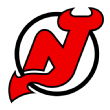
The Devils had a goaltending problem, watching their team save percentage drop from 10th in the NHL to 30th over the past two seasons. They allowed the first goal of the game 70% of the time last season. Even if they would dig out of that hole, porous goaltending would give the lead right back.
The first major solution to that problem was the trade that brought Allen from Montreal on March 8 — too late to save that season, but a building block for this one. Step two was the long-anticipated trade with the Flames for Markstrom, a 15-year veteran expected to finally strengthen the weakest part of the Devils.
“Markstrom and Allen could be really good. Allen still has good games in him, and Markstrom is looking at this as his ‘let’s go!’ season behind a contending team,” one goalie analyst noted.
The analysts we spoke to all had the Devils in their top-five tandems. One former NHL goaltender had them second overall.

Connor Hellebuyck, Eric Comrie
It’s hard to argue against the reigning Vezina winner. It’s even harder to argue against the reigning Vezina winner when he was also sixth for the Hart Trophy last season, credited with getting his team to a 110-point season.
“Connor Hellebuyck is the reason why the Jets are here,” one NHL goalie analyst said, in an understatement.
Hellebuyck does it all. He’s played 60 games or more in each of the past three seasons. His save percentage was north of .920 over the past two campaigns. He led the NHL in goals saved above expected (22.6).
Returning as his backup is Comrie, who was his understudy in 2021-22 before signing with Buffalo, where he played two ill-fated seasons. Comrie had an .874 save percentage in 10 games last season.
“Comrie’s season in Buffalo was absurd last season, but I really think he’s a perfect fit in Winnipeg, where he’s comfortable,” another goalie analyst said.
It’s all about Hellebuyck, and he’s the best in the NHL at what he does. Whatever Comrie gives them is gravy. Although not having a better backup is what kept the Jets out of the top spot in the tandem ranking.
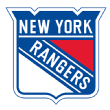
Igor Shesterkin, Jonathan Quick
Our panel of experts agreed that the Rangers deserved the top spot in the goalie tandem ranking, now that the Bruins broke up the band.
Shesterkin is well-established as one of the top goaltenders in the NHL, even if he hasn’t hit the heights of his Vezina-winning 2021-22 campaign again. He had a .912 save percentage last season in 55 games, although he had only 3.46 goals saved above expected. He’s going to break the bank on his next contract for a reason: Few netminders in the NHL are even in the conversation with Shesterkin as far as ability to take over a game.
But the reason this tandem could be considered the NHL’s best has to do with the 27 games Shesterkin didn’t play. Quick, 38, was 18-6-2 last season for the Rangers, reviving his career after it looked like it might have reached its end with the Kings and Golden Knights in 2022-23. (Quick did win a third Stanley Cup ring with the Knights as a backup goalie.)
Quick’s underlying numbers were better than Shesterkin’s in some cases last season.
“If Jonathan Quick plays like he did last season, they absolutely deserve to be here,” an NHL goalie analyst said.
That’s a significant if given Quick’s age and mileage, but the NHL should know better than to count him out by now.
